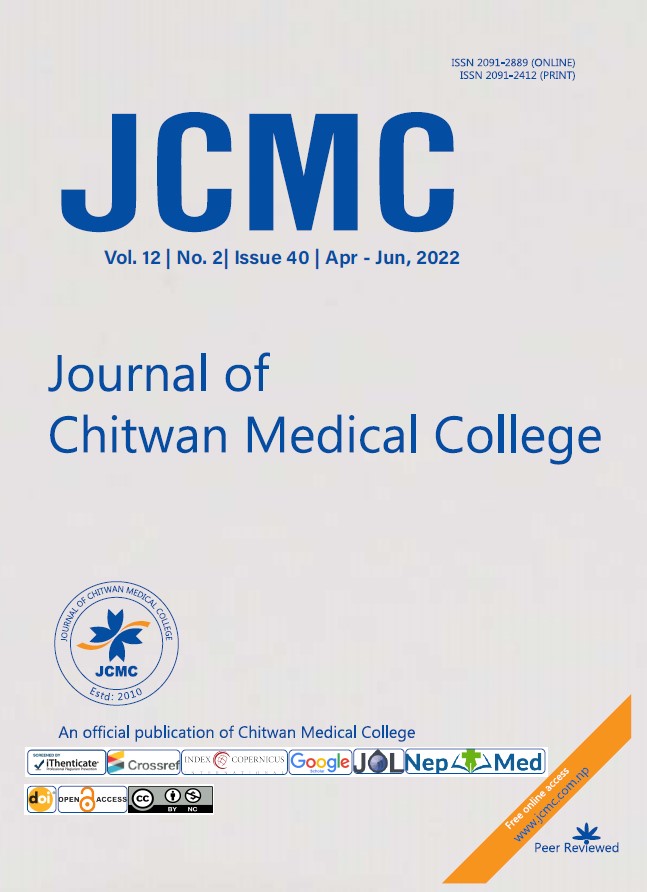CORRELATION OF HAMSTRING GRAFT SIZE WITH ANTHROPOMETRIC MEASUREMENTS IN PATIENTS UNDERGOING ANTERIOR CRUCIATE LIGAMENT RECONSTRUCTION AT CHITWAN MEDICAL COLLEGE
Keywords:
ACL reconstruction, Anthropometry, Hamstring graft, Quadruple bundleAbstract
Background: Injury to Anterior Cruciate Ligament (ACL) commonly occurs in knee injury usually requiring surgical intervention. Use of hamstring autograft for ACL reconstruction (ACLR) is commonly practiced. Many factors govern the selection of graft. Literature lacks studies showing correlation between anthropometric measurements of patients and the size of hamstring tendon graft in ACLR in Nepalese population. This study aimed to correlate anthropometric measurements to diameter and length of graft obtained.
Methods: Cross sectional study was carried out from 17th April 2021 to 15th March 2022 and approved by CMC-IRC (Ref: CMC-IRC/078/079-094) and evaluating patients who have undergone surgery in Anthropometric measurements along with thigh length and circumference was measured pre-operatively. Length and diameter of prepared graft was measured intraoperatively before insertion. Forty (n=40) patients of mixed age, sex and ethnicity undergoing Arthroscopic ACLR were included. Statistical analysis was done to find correlation between anthropometric measurements and graft size harvested. Purposive sampling technique was used. Data collection was done in proforma. Data entry was done in Excel and and analysis was done in SPSS version 21.
Results: Statistical analyses showed strong positive correlation between patient’s thigh length and graft diameter. Height shows positive correlation with graft length and diameter. Weight shows positive correlation with graft length. There was very low correlation of other variables with graft diameter and length which were statistically insignificant.
Conclusions: Positive correlation factors (thigh length, height and weight) can be utilized to anticipate good quality graft and can be used during ACLR.





